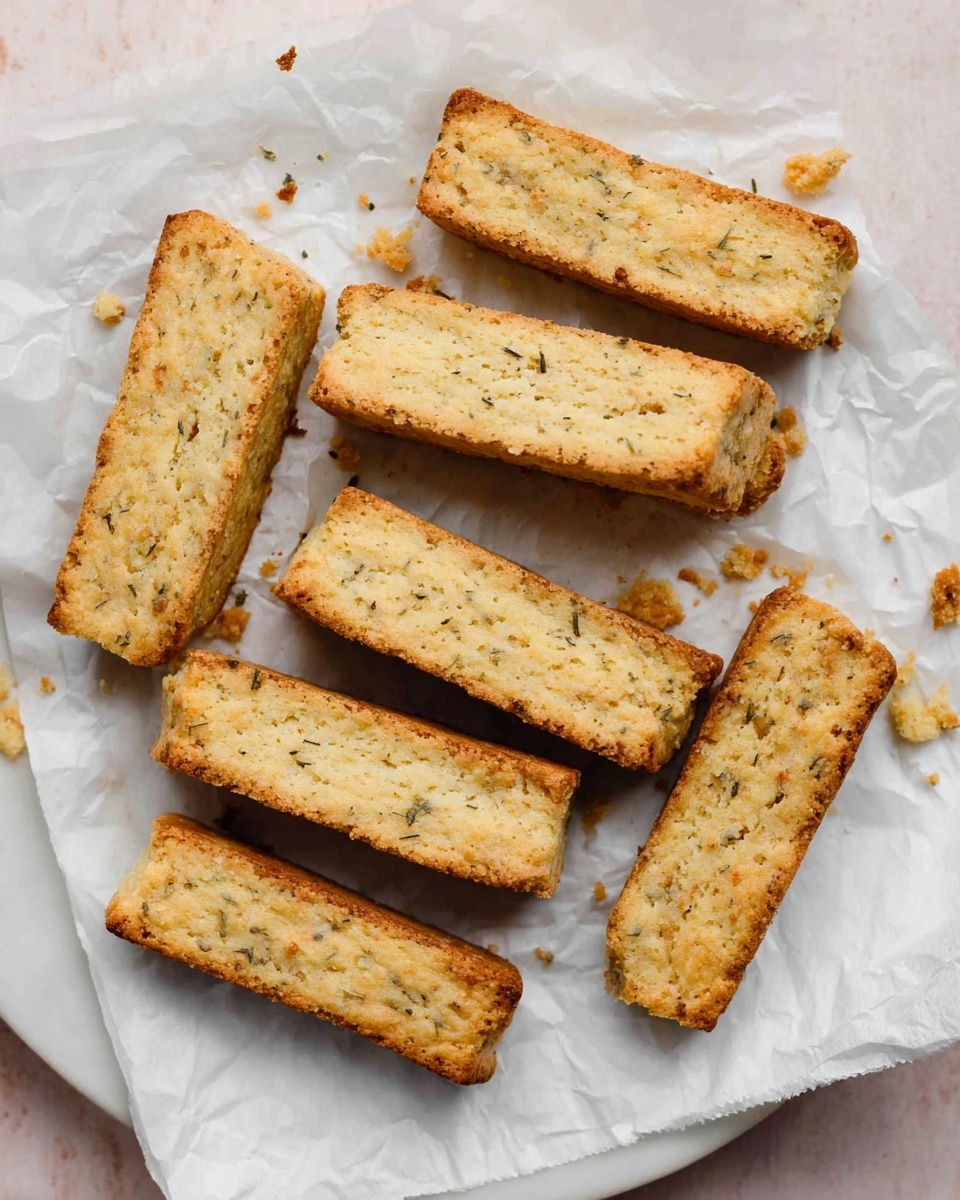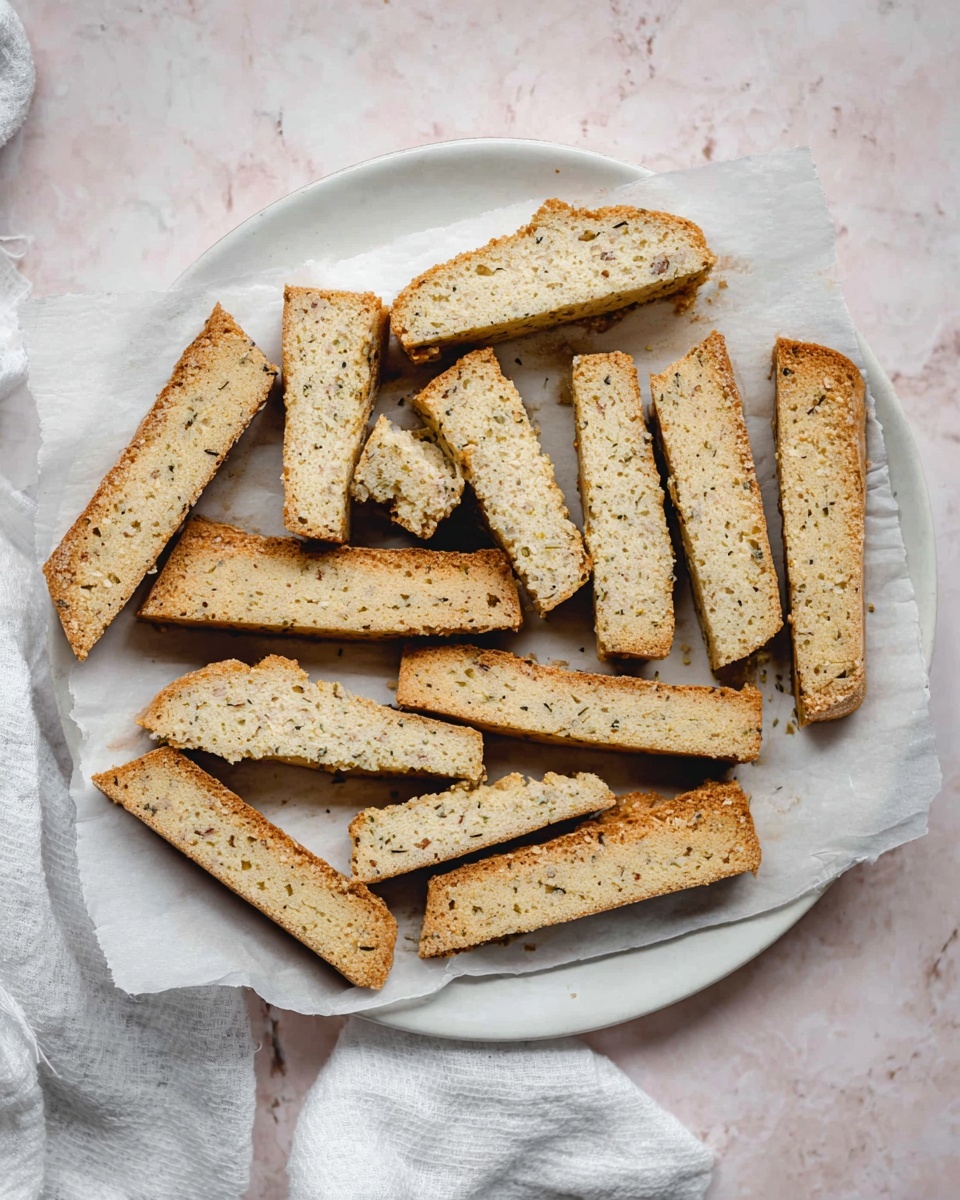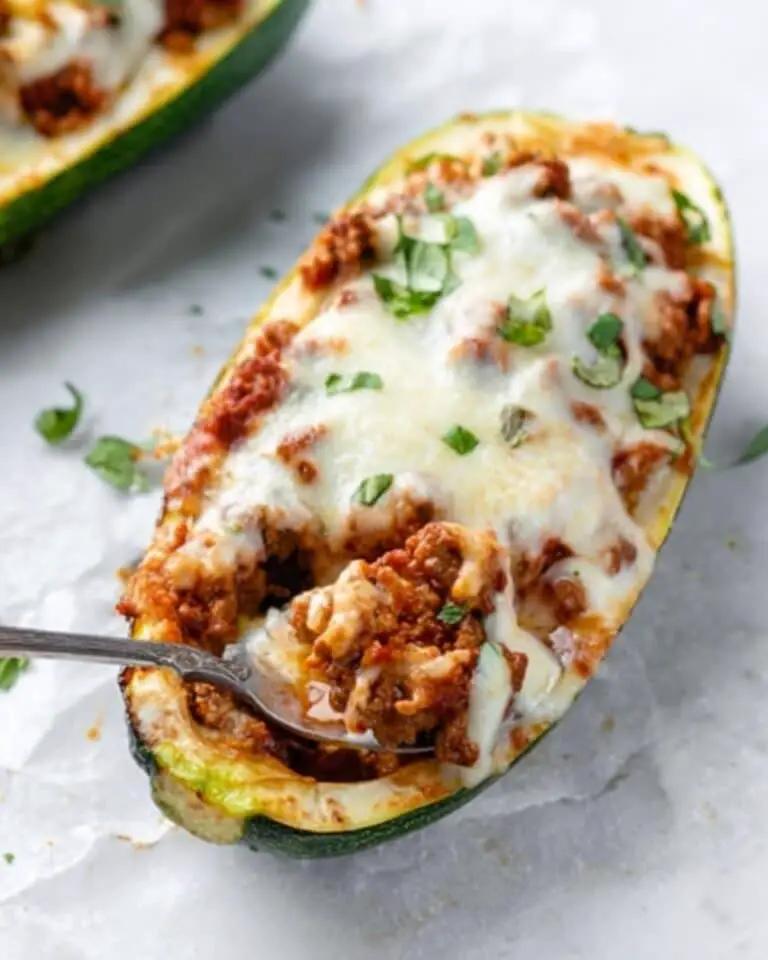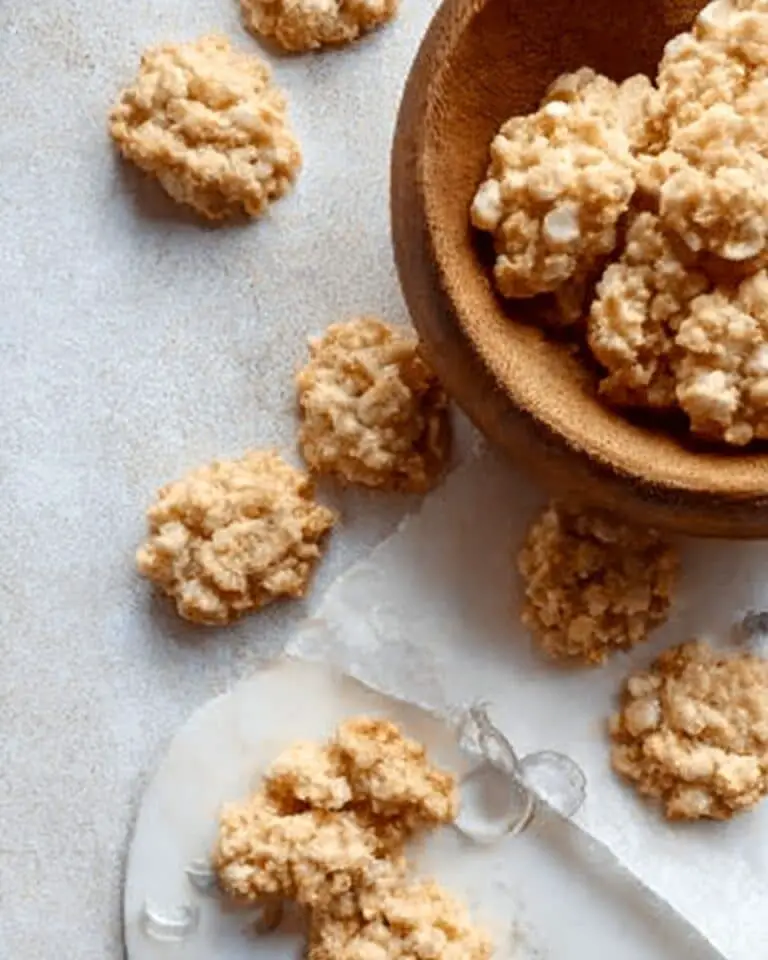I absolutely love this Salted Rosemary Shortbread recipe because it’s the perfect balance of buttery, crisp, and savory with that wonderful subtle herbal kick from fresh rosemary. When I first tried this recipe, I was amazed at how the grapefruit zest added a light citrus note that just brightened up the whole cookie without overpowering it. You’ll find that these shortbread cookies are just as delicious as they are pretty, making them perfect for gifting or enjoying with your afternoon tea.
What makes this Salted Rosemary Shortbread recipe really stand out is how the flaky sea salt sprinkled on top adds that irresistible little crunch and pops of saltiness, elevating each bite to a new level. I love baking these around the holidays or whenever I want a special treat that feels a little sophisticated but is still incredibly easy to make. Trust me, once you try these, they’ll quickly become your favorite go-to shortbread cookie.
Why You’ll Love This Recipe
- Perfect balance of flavors: The salty, herby, and citrus notes create a uniquely delicious shortbread.
- Simple ingredients: You probably have most of what you need right in your pantry and fridge.
- Make-ahead friendly: These cookies keep well, so you can bake early and enjoy over time.
- Crowd-pleaser: My family goes crazy every time I pull these out, and I bet yours will too!
Ingredients You’ll Need
Each ingredient in this Salted Rosemary Shortbread recipe plays a specific role to create the perfect texture and flavor. I love how the combination of all-purpose and rice flour lends a delicate crispness, while fresh rosemary and grapefruit zest give freshness and complexity.
- All-purpose flour: Provides the structure to the shortbread with a tender crumb.
- Rice flour: Helps make the texture extra crisp and light; worth seeking out if you can.
- Kosher salt: Balances the sweetness and enhances the rosemary’s herbal notes.
- Fresh rosemary: Finely chopped for maximum fragrance and flavor without overpowering.
- Unsalted butter: The star ingredient for rich flavor and melt-in-your-mouth texture.
- Granulated sugar: Split between dough and topping for sweetness and a slight crunch.
- Grapefruit zest: Adds a citrus brightness that lifts the whole cookie.
- Flaky sea salt: Sprinkled on top to finish for a sophisticated, salty crunch.
Variations
I love experimenting with this Salted Rosemary Shortbread recipe to suit any occasion or taste. Feel free to swap out some ingredients or add new flavors to make it your own. Little tweaks can make a big difference!
- Herb Variation: I once tried thyme instead of rosemary and was pleasantly surprised by the subtle earthiness it added.
- Citrus Twist: Sometimes I swap grapefruit zest for lemon or orange zest depending on the season for a different kind of zing.
- Nutty Addition: Adding finely chopped toasted almonds or pistachios gives a lovely crunch and extra dimension.
- Gluten-Free: Try replacing all-purpose flour with a gluten-free blend, but keep the rice flour for texture.
How to Make Salted Rosemary Shortbread Recipe
Step 1: Prepare Your Pan and Dry Ingredients
First things first, line an 8×8 inch baking pan with parchment paper, letting the edges hang over so you can lift the shortbread out easily later. Then whisk together the all-purpose flour, rice flour, kosher salt, and finely chopped rosemary in a bowl. This ensures your dry ingredients are evenly mixed and the rosemary distributes perfectly throughout the dough—trust me, that first sniff is worth the prep.
Step 2: Cream Butter, Sugar, and Grapefruit Zest
Using a stand mixer fitted with the paddle attachment, beat your softened unsalted butter with half the sugar and the grapefruit zest on medium-high until the mixture is light and fluffy, about 2-3 minutes. Don’t rush this; proper creaming traps air that creates that tender crumb in your shortbread. Scrape down the sides of the bowl a couple times to keep everything well incorporated.
Step 3: Combine Dough and Chill
Slowly add the dry ingredients to your butter mixture, starting on low speed so the flour doesn’t fly everywhere. Once crumbly, increase to medium speed and beat until the dough just comes together, about 2 more minutes. Transfer this mixture to your prepared pan and press it evenly with an offset spatula—it’s super helpful in getting a smooth surface. Pop it in the fridge for at least an hour; chilling firms up the dough and prevents spreading during baking.
Step 4: Bake with Salted Sugar Topping
Preheat your oven to 375°F (190°C). Before baking, prick the shortbread all over with a fork to create those classic little holes, then sprinkle the remaining tablespoon of sugar evenly on top, followed by a generous dusting of flaky sea salt. The salt is the secret star here, giving each bite a buttery-salty pop. Bake for 30-35 minutes until the edges are golden and the surface is evenly colored—it smells heavenly at this point!
Step 5: Cut and Cool the Shortbread
As soon as you pull the pan from the oven, cut the shortbread into strips while still warm—4 strips lengthwise, then rotate and cut 8 strips perpendicularly—giving you 32 rectangular cookies. Let it sit for 10 minutes so it firms up a bit, then run a thin spatula around the edges to loosen the cookies and prevent sticking. Once completely cool, use the parchment paper to lift the shortbread from the pan and separate cookies along cut lines if needed.
Step 6: Enjoy or Store
You can enjoy these straight away, or—if you want to get ahead—they keep beautifully for up to a week at room temperature in an airtight container, or freeze them for up to three months. I often bake a batch before a big gathering, and having these on hand means extra smiles without last-minute stress.
Pro Tips for Making Salted Rosemary Shortbread Recipe
- Use room temperature butter: I learned this the hard way — cold butter won’t cream well, and melted butter alters texture too much.
- Don’t skip chilling: Chilling the dough solidifies fats so your shortbread keeps its shape beautifully while baking.
- Even rosemary chopping: Finely chop fresh rosemary to avoid overpowering bites, plus it looks prettier dispersed throughout.
- Cut while warm: Sharp cuts right after baking stop cracks and keep edges neat — I always do this step carefully!
How to Serve Salted Rosemary Shortbread Recipe
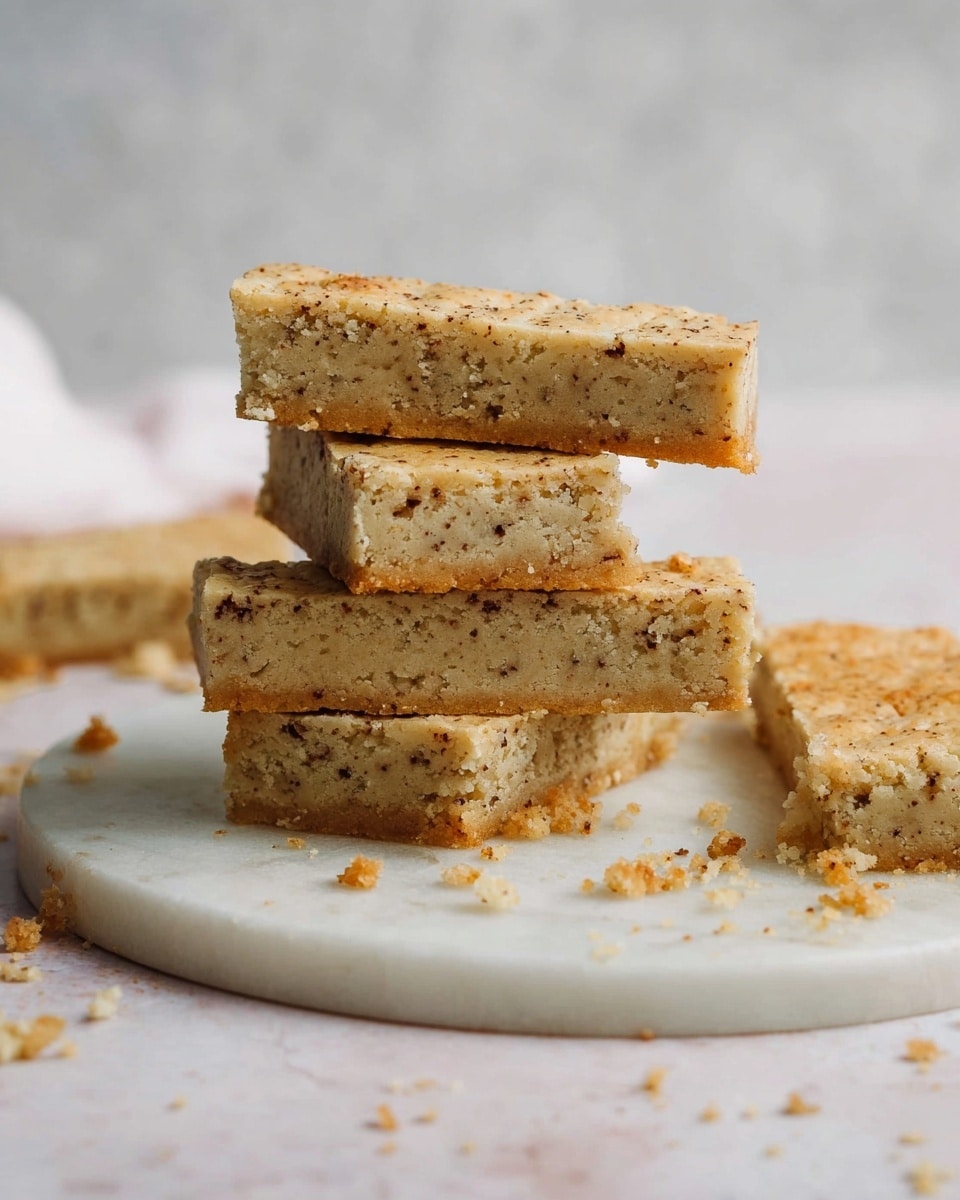
Garnishes
When I serve these shortbread cookies, I love adding a tiny sprinkle of additional flaky sea salt or a small rosemary sprig on the side for that rustic touch. Sometimes a delicate drizzle of white chocolate complements the flavor nicely too, especially if you’re offering them as a bakery-style treat.
Side Dishes
These salted rosemary shortbreads pair wonderfully with a hot cup of herbal tea, a sharp aged cheddar cheese board, or even alongside spiced mulled wine during cooler months. I’ve also served them with a spread of fresh fruit preserves for a nicely balanced snack tray.
Creative Ways to Present
For special occasions, I like to stack these lovely rectangular cookies on a tiered cake stand with sprigs of fresh rosemary tucked between layers. Wrapping them individually in parchment and tying with twine makes a charming homemade gift. You could even use cookie cutters to shape the dough before baking for fun variations!
Make Ahead and Storage
Storing Leftovers
I store leftover salted rosemary shortbread in an airtight container lined with parchment paper at room temperature. They stay fresh and crisp for about a week, which is perfect because they rarely last longer than that in my house! If you notice any softness, a quick re-crisp in the oven helps bring back that fresh-from-the-bakery texture.
Freezing
Freezing these cookies works beautifully—just place the cut but unbaked dough in the pan or freeze the baked cookies separated with parchment layers in a freezer-safe container. When you’re ready to enjoy, thaw at room temperature before serving. I always freeze some extra because they’re such a crowd-pleaser, and it’s so easy to pull them out as needed.
Reheating
If you want to freshen up slightly stale shortbread, pop them in a 300°F (150°C) oven for 5-7 minutes. Keep an eye on them to avoid browning too much. This trick brings back their crispness and enhances the buttery aroma—like they just came out of the oven again.
FAQs
-
Can I make the Salted Rosemary Shortbread Recipe without fresh rosemary?
Yes! If fresh rosemary isn’t available, you can use dried rosemary, but reduce the amount and crush it finely to avoid chewy bites. You could also try other herbs like thyme or lavender for different flavor profiles.
-
Why use both all-purpose and rice flour in this recipe?
The all-purpose flour provides structure, while the rice flour adds a light, crisp texture. This combination ensures your shortbread isn’t too dense but still holds together nicely.
-
Can I make this cookie dough ahead and bake later?
Definitely! You can make the dough, press it into the pan, and refrigerate it for up to 24 hours before baking. Just make sure to cover the dough tightly to prevent drying out.
-
How should I store leftover shortbread cookies?
Store them in an airtight container at room temperature layered between parchment paper for up to a week. If you want to keep them longer, freeze them and thaw before serving.
Final Thoughts
I love sharing this Salted Rosemary Shortbread recipe with friends because it always wins over anyone who tries it — whether they’re shortbread fans or totally new to these buttery cookies. The layers of flavor, the satisfying crunch from the flaky salt, and the subtle herbal and citrus notes make it a cookie that feels both special and comforting. Give it a try next time you want to bake something delightful and surprisingly easy—you’ll be so glad you did!
Print
Salted Rosemary Shortbread Recipe
- Prep Time: 1 hour 10 minutes
- Cook Time: 30 minutes
- Total Time: 1 hour 40 minutes
- Yield: 3 dozen cookies
- Category: Dessert
- Method: Baking
- Cuisine: American
Description
Delightfully buttery and crisp salted rosemary shortbread cookies infused with fresh rosemary and grapefruit zest, topped with flaky sea salt for a perfect balance of savory and sweet flavors.
Ingredients
Dry Ingredients
- 1 1/2 cup (180g) unbleached all-purpose flour
- 1/3 cup (43g) rice flour
- 1/2 teaspoon kosher salt, plus more to taste
- 2 tablespoon fresh rosemary, finely chopped
Wet Ingredients
- 1 cup (2 sticks, 1/2 pound, or 227g) unsalted butter, room temperature
- 1/2 cup plus 1 tablespoon (112g) granulated sugar, divided
- 2 teaspoon finely grated grapefruit zest
Topping
- Flaky sea salt, for topping
Instructions
- Prepare Pan and Mix Dry Ingredients: Line an 8 x 8-inch (20 x 20cm) baking pan with parchment paper, leaving an overhang on two sides for easy removal. In a bowl, whisk together the all-purpose flour, rice flour, finely chopped rosemary, and salt. Set aside.
- Cream Butter, Sugar, and Zest: In the bowl of a stand mixer fitted with the paddle attachment, beat the unsalted butter, 1/2 cup granulated sugar, and grapefruit zest on medium-high speed until the mixture is light and fluffy, about 2 to 3 minutes. Scrape down the sides as needed to ensure even mixing.
- Incorporate Flour Mixture: Add the reserved flour mixture to the butter mixture. Beat on low speed until crumbly, then increase to medium speed and beat until fully combined, about 2 more minutes. Scrape the bowl as necessary to blend well.
- Form and Chill Dough: Transfer the dough into the prepared pan and use an offset spatula to spread and press it evenly into the pan, smoothing the top. Refrigerate until the dough is firm, about 1 hour.
- Preheat Oven and Prepare for Baking: Preheat your oven to 375°F (190°C). Using a fork, prick the dough evenly all over the surface. Sprinkle the remaining 1 tablespoon of sugar evenly on top, followed by a generous sprinkle of flaky sea salt.
- Bake the Shortbread: Bake the shortbread in the preheated oven until the edges are golden brown and the surface is evenly golden, approximately 30 to 35 minutes.
- Cut and Cool: Immediately upon removing from the oven, cut the shortbread into four 2-inch wide strips lengthwise. Rotate the pan 90 degrees and make eight 1-inch wide cuts perpendicular to the first cuts to create 32 rectangular cookies. Let them sit for 10 minutes, then carefully run a thin spatula around the edges of the pan to loosen the cookies. Allow the cookies to cool completely in the pan.
- Remove and Separate: Use the parchment paper overhang to lift the cookies from the pan. If needed, retrace cut marks to fully separate the cookies before serving or storing.
- Storage Tip: These cookies can be baked, cut, and cooled up to 1 week in advance. Store them on parchment in an airtight container at room temperature or freeze for up to 3 months.
Notes
- Use room temperature unsalted butter for best creaming results.
- Fresh rosemary adds a fragrant herbal note; finely chopping helps distribute flavor evenly.
- Grapefruit zest provides a bright citrus contrast to the savory rosemary and salted topping.
- Rice flour contributes to a tender, crumbly texture in the shortbread.
- Chilling the dough before baking ensures a firm texture and prevents spreading.
- Cutting the shortbread immediately after baking while warm allows clean, sharp edges.
- Flaky sea salt topping enhances the flavor with a delicate crunch.
- Store baked cookies in an airtight container at room temperature or freeze for extended freshness.
Nutrition
- Serving Size: 1 cookie (approx. 25g)
- Calories: 120
- Sugar: 6g
- Sodium: 70mg
- Fat: 8g
- Saturated Fat: 5g
- Unsaturated Fat: 2.5g
- Trans Fat: 0g
- Carbohydrates: 12g
- Fiber: 0.4g
- Protein: 1g
- Cholesterol: 20mg

